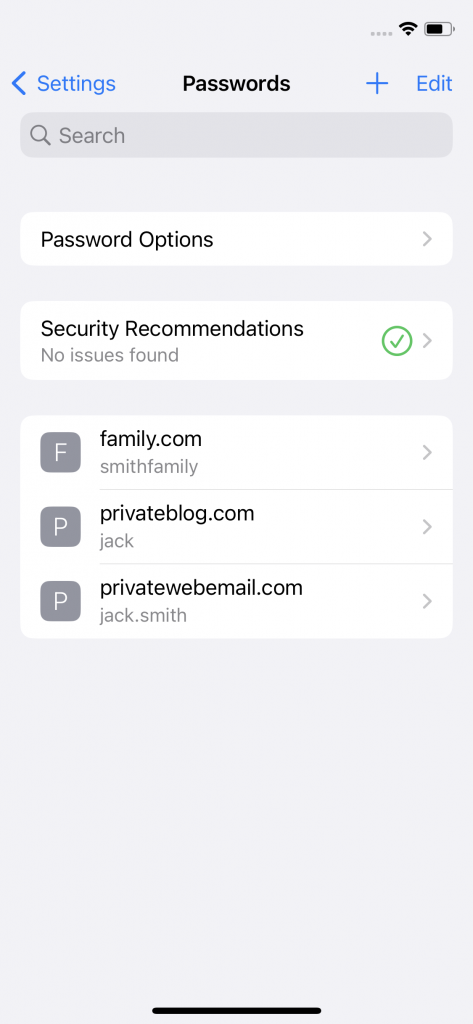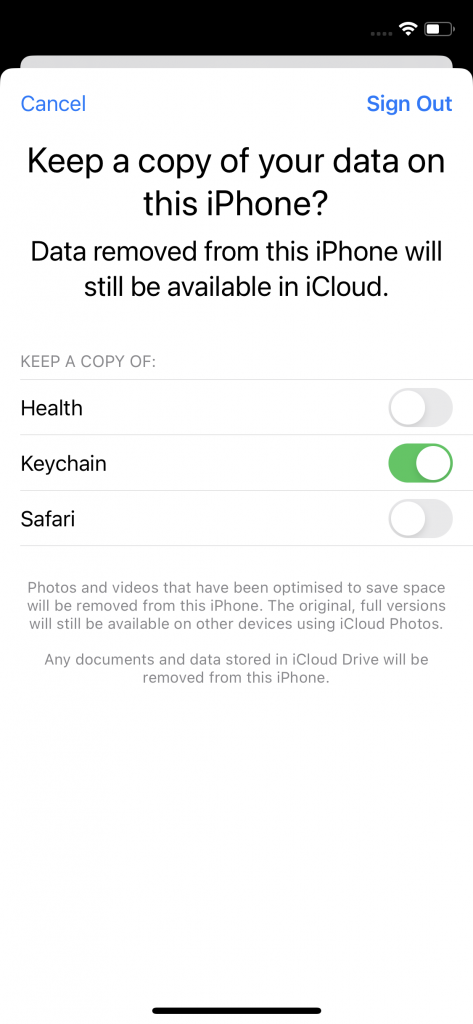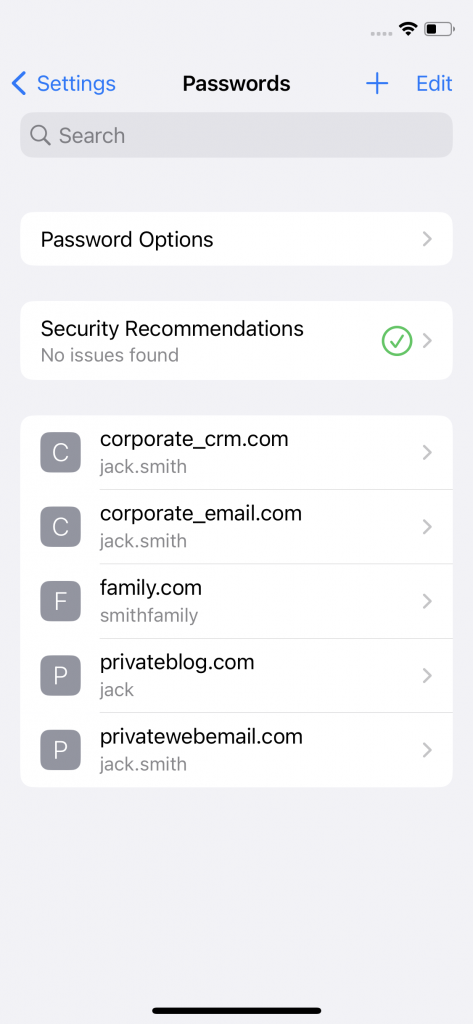The ability to switch Apple IDs on iOS devices poses a security risk for Corporate-Owned, Personally Enabled (COPE) mobile environments. When users opt to retain Keychain entries while transitioning from a corporate Apple ID to a private Apple ID, it results in the merging of passwords to the private Apple ID. This merging poses a significant challenge for organizations that need to maintain strict control over corporate credentials, as enterprise passwords can then be synced with all private devices using the private Apple ID.
Switching Apple IDs on an iOS device involves opening the “Settings” app on an iOS device, navigate to the Apple ID section and opt to sign out of the current Apple ID. This prompts a confirmation step, asking users if they wish to keep a copy of their data on the device or to delete it. This decision is crucial to consider because if the user opts to keep the Keychain data to be stored on the device, this decision will have implications for the passwords associated with the Apple ID currently signing out. Following the sign-out, users can proceed to sign in with the new Apple ID. Once the necessary information is entered and the setup is complete, the iOS device becomes associated with the new Apple ID. The device syncs with the new account, applying apps, data, and settings associated with the updated Apple ID. However, apps installed with the previous Apple ID are still usable.


Keychain Merging and Its Effects
When logging into a website using Safari, a pop-up typically appears, asking if the user likes to store the password for AutoFill. This method simplifies the process of adding accounts to the password store. Alternatively, when creating a new account, users receive an automatically generated strong password. In either case, users can add accounts and passwords in the password store. The passwords are stored in the Keychain. If the user chooses to keep the Keychain data stored on the device during the Apple ID switching, this results in a merging of the stored passwords of the former and the latter configured Apple ID on the device.
COPE environments prioritize the separation of work and personal data, but the Keychain merging while switching Apple IDs on iOS devices undermines this separation. This has to be considered in situations where employees use their personal Apple IDs alongside corporate profiles on the same device. If one Apple ID during the Apple ID switching process is the corporate ID and the other is the private ID, that leads to merging of corporate and personal credentials compromising the security posture of COPE mobile environments and/or the privacy of the user’s private credentials.


Lack of Mitigation Through MDM Restrictions
Currently, there is an absence of Mobile Device Management restrictions to mitigate the unintended consequences of password merging during Apple ID switching. The inability to prevent Keychain merging in COPE environments can have a significant impact for organizations. The only measure is to enforce employee education and awareness regarding the risks associated with Apple ID switching and Keychain merging. Training programs should emphasize the importance of choosing secure options during account transitions and the potential impact on corporate and private data security.
Conclusion
The merging of Keychain entries during Apple ID switching on iOS devices poses a significant security challenge, particularly in COPE mobile environments. Organizations currently need to be proactive in addressing this issue through employee education and awareness programs. Collaboration between organizations, MDM providers and Apple, is needed to develop comprehensive solutions that safeguard corporate credentials and mitigate the risks associated with Apple ID switching.
